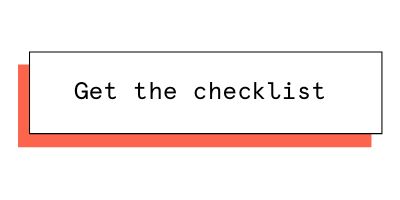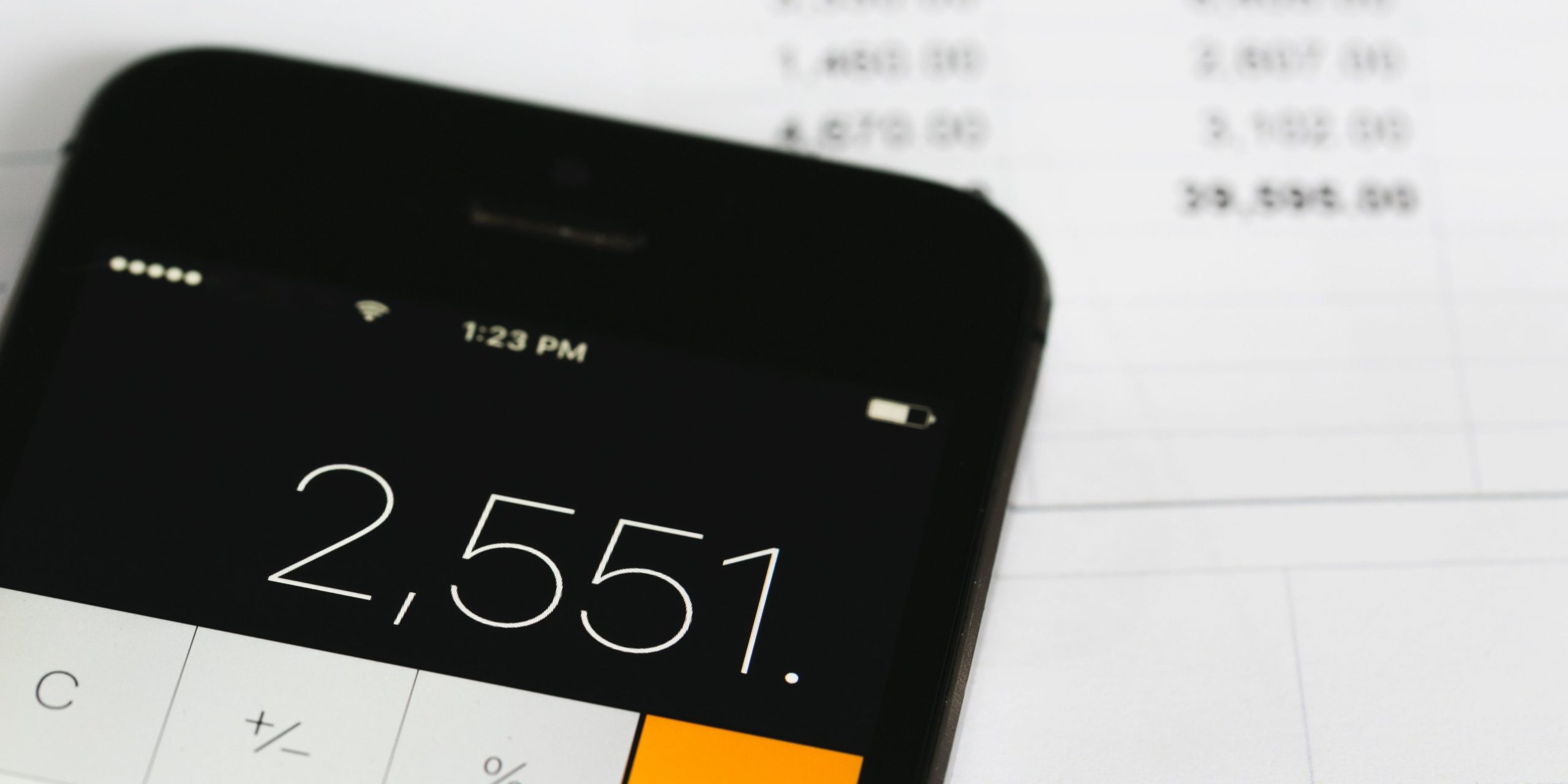As a crowdfunding creator, your goal is to raise money to bring your awesome idea into the world. But, in order to do that, you’ll have to spend some money. So let’s make sure that you’re spending that money wisely! Developing a Kickstarter project budget is one of the most important things you’ll do before you launch — doing this planning ensures you can cover all of your costs and that you are actually able to bring your project to life. We spoke with Aaron Hansen, VP of Crowd Ox (which recently joined the BackerKit team) and crowdfunding creator, to get his tips on what creators need to think about while making a budget and setting a funding goal.
Step 1: Outline what you’ll need for every phase of your campaign
Get started by listing out all of your anticipated expenses in a spreadsheet. You don’t have to assign any dollar amounts to anything at this point — this is just a list of everything you’re going to need to develop, launch, market, and deliver your project. “The more comprehensive the list is, the more accurate your final budget will be,” Hansen says.
To make this process easier, try visualizing these costs in terms of what you’ll need before launching, during your campaign, and after your campaign.
Before your launch
These will be the costs associated with everything that will be featured on your campaign page, as well as any pre-launch advertising and early product development. Your list may include:
- Copywriting: Will you need to hire an experienced copywriter to write your campaign page content?
- Art: How will you create the mockups or other campaign art that you want to display?
- Photography and video: Will you be hiring a professional photographer? Do you need any equipment?
- Prototypes: Which materials, tools, or services will you be using to develop your prototype?
- Pre-launch promotion: Will you be using ads to build your email list and promote your project before launching? Will you be using BackerKit Launch to message your audience and secure early pledges? Do you need to build a website or landing page?
- Public relations: Will you need to spend money to get previews or interviews featuring your product?
- Events and conventions: Will you be attending any industry events for product research or promotional purposes?
During your campaign
Think about what you’ll need to promote and run your campaign. Costs may include:
- Marketing: How much will you need to set aside for your Kickstarter marketing budget? Will you be using a professional service like BackerKit Marketing to help you reach potential backers once you’ve launched? Will you be creating social media ads on your own?
- Crowdfunding services, team members, and other professionals: Who will help you with day-to-day operations and project management? Will you need to hire a team of experts or a company to take the reins?
- Stretch goals: If you hit your funding goal, will you be creating additional stretch goal rewards?
After your campaign
These will be all of the costs associated with delivering a product to your backers after you’re funded. Things you’ll need to consider in this phase include:
- Platform and transaction fees: What will you have to pay to your crowdfunding platform once you’re funded? Kickstarter and Indiegogo both deduct fees from the money you raise.
- Manufacturing: If you’re creating a physical product, how will you actually bring it to life once you’re funded? How many units do you anticipate you’ll need?
- Packaging: How will you package items? Will you need to hire a company to help develop special packaging?
- Pledge Manager: How many backers do you think you’ll have? Depending on the size of your project and the number of backers, you may need a pledge manager to keep track of orders.
- Shipping: How much will your product weigh? Which countries will you be shipping it to? Think about freight charges and customs fees.
- Taxes: Crowdfunded income is taxable. How will you meet your tax obligations?

Your spreadsheet may look something like this or it could simply be two columns (“expenses” and “costs”) or look like something entirely different and more complex. (You could use the Kickstarter Project Budget tool to outline everything.) Go with whatever format helps you understand your expenses.
 Quick tip: If this is your first Kickstarter or Indiegogo campaign, and you’re not sure what you’ll need, don’t be afraid to ask other creators. There are Facebook communities dedicated to different crowdfunding categories like publishing and tabletop games where you can ask questions.
Quick tip: If this is your first Kickstarter or Indiegogo campaign, and you’re not sure what you’ll need, don’t be afraid to ask other creators. There are Facebook communities dedicated to different crowdfunding categories like publishing and tabletop games where you can ask questions.
Simplifying your Kickstarter project budget
As you’re outlining these costs, note the tasks you can do yourself. If you have a smaller project and end up targeting a more modest goal, you may be able to handle many of the tasks listed above on your own or with a group of friends, using items or equipment you already own. With that being said, be honest with yourself about your bandwidth and ability. If, for instance, you don’t feel confident in your ability to record and edit an engaging campaign video or if you feel your energy would be better spent on another task, find out who can help you deliver the results you’re looking for.
Step 2: Write down pricing estimates
After outlining everything you’ll need for your campaign, determine the costs associated with completing each task, and write those numbers down in your spreadsheet. This will take time and research, but you shouldn’t cut corners or make up numbers. Reach out to friends, industry contacts, and anyone else in your network for service or product recommendations. Ask other creators who they worked with.
Once you have a list of options, start getting quotes. For things like manufacturing and shipping, you should get quotes from multiple companies. Talk to local providers to find out what they charge. Check out the pricing pages for the services that you’re interested in. You don’t have to make a commitment to work with any of these people or buy anything at this point. You simply want to make sure that the estimates you’re writing down next to all of your anticipated expenses are as accurate as possible. Your Kickstarter project budget will be based on these estimates.

 Quick tip: Get a manufacturing quote that scales. Tell the manufacturer the minimum number of units that you’ll require and get another quote in case you need more units. Check out our presentation with Panda Game Manufacturing to learn more about the manufacturing process.
Quick tip: Get a manufacturing quote that scales. Tell the manufacturer the minimum number of units that you’ll require and get another quote in case you need more units. Check out our presentation with Panda Game Manufacturing to learn more about the manufacturing process.
Your Kickstarter project budget helps you prepare for the unexpected
There may be some unexpected costs. Shipping rates, for instance, aren’t fixed and change every year. The manufacturer you’ve decided to use may increase their rates or change the minimum number of units you have to print. It’s important to build a buffer to offset these surprises. Hansen recommends adding a 10-15% buffer on anything that’s not manufacturing or shipping and overestimating manufacturing and shipping costs by 30%.
“In my experience, there is always an unexpected cost in manufacturing or shipping,” Hansen says. “For example, if you get shipping costs in April, but don’t ship until December, the costs for shipping will have increased because of holiday shipping rates.”
Because the largest unexpected costs usually occur during manufacturing and fulfillment, Hansen recommends that you spend extra time trying to understand every part of this process. “Reach out to other creators with similar projects and see if you can gather any additional information on what costs you’re overlooking. If you feel overwhelmed, there are some additional things you can do such as hiring a crowdfunding consultant who understands the process,” he says.
Step 3: Use the information you’ve collected to set your funding goal
Your funding goal should be based on what it will actually cost (with that buffer for unexpected expenses) to make your project a reality. This is why it’s so important to list out everything you’ll need throughout your campaign and get those accurate pricing estimates.
You don’t want to target a really ambitious goal that far exceeds your actual costs because it’s going to be harder to get funded. At the same time, you don’t want a goal that’s too low. “Setting a low goal that doesn’t actually meet your funding needs is a recipe for disaster,” Hansen says. “Setting a goal lower than your known costs could lead to the project being unfunded or additional out-of-pocket costs.”
It’s for all of these reasons that you need to have a good understanding of what it’ll take to pay for your project.
 Quick tip: Once you have all of your estimates, you can use the Kickstarter Funding Calculator to compute platform and payment processing fees and taxes, and then find out a suggested funding goal.
Quick tip: Once you have all of your estimates, you can use the Kickstarter Funding Calculator to compute platform and payment processing fees and taxes, and then find out a suggested funding goal.
Reasons to increase your funding goal
People turn to crowdfunding for many different reasons. While some are hoping to crowdfund a passion, others have their sights set on building a business. Those who fall into this second group may need to increase their funding goals. “You’ll need to decide what the purpose is for your crowdfunding project and what you want to get out of it,” Hansen says. “If you’re planning to launch a business, you may need a higher funding goal to manufacture additional products to sell later. Your funding goal should include your estimated costs and any additional funding you need to meet your goals.”
It’s important to note that these additional expenses, like every other expense, should be researched and based on real-world estimates.
A note on million-dollar campaigns
Kickstarter may have a reputation for churning out multi-million dollar campaigns. These are the campaigns that go viral and everyone hears about. But the truth is that very few creators actually raise that much money. Research conducted by the Hustle shows that 67% of successful projects raise less than $10,000. Of the unsuccessful projects, which are usually targeting larger goals, 2 out of 10 don’t receive any pledges, and 6 out of 10 aren’t even able to reach 20% of their goal. It’s important to keep this data in mind while setting your expectations for your campaign.
Step 4: You’ve made your Kickstarter project budget — now stick to it
You’ve written down every task you need to complete and all of your expenses in your spreadsheet. This will be your Kickstarter project budget and it’s important to follow it as closely as you can.
Limit on the fly changes because if you don’t, costs may increase and your campaign will become more complex. “While everyone wants additional stretch goals and free upgrades, they can really ruin a crowdfunding budget quickly,” Hansen says. “You’ll get suggestions on how to change your product. While these can be useful, the changes could also have serious repercussions for your budget. Decide what you want, plan for that, and stick with it.”
You can’t anticipate every twist and turn of your campaign. But if you have a Kickstarter project budget in place, it’ll be easier to deal with any monetary surprises and stay organized. Make sure you’re as thorough as possible and you’ll be on track to launching a successful campaign.
To learn more about what you need to do to get ready for your launch, check out our Crowdfunding Checklist. 
